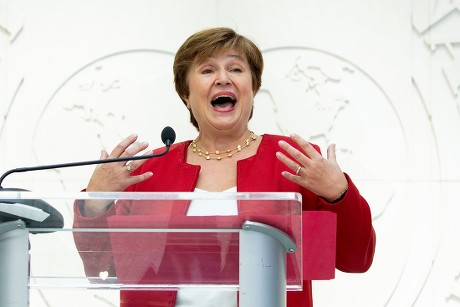Washington, D.C. – U.S. President Donald Trump and Russian President Vladimir Putin engaged in a high-stakes phone call that has sparked global attention and speculation. Lasting over two hours, the conversation marked their first direct exchange since Trump’s return to the White House and centered on ending the ongoing war in Ukraine, alongside broader discussions on bilateral relations, the Middle East, and global stability. As the dust settles, analysts are piecing together how the dialogue unfolded and what it signals for the future of U.S.-Russia ties, the Ukraine conflict, and the international order.
How the Discussion Played Out
The call, confirmed by both the White House and the Kremlin, was preceded by weeks of diplomatic groundwork. Trump’s special envoy, Steve Witkoff, had met with Putin in Moscow the previous week, spending over seven hours laying the foundation for a potential ceasefire in Ukraine. These preparatory talks narrowed differences between Russian and Ukrainian positions, with Ukraine agreeing to a U.S.-backed 30-day ceasefire proposal during negotiations in Saudi Arabia on March 11. Trump, leveraging his self-styled dealmaker persona, entered the call aiming to secure Putin’s buy-in for a comprehensive truce, signaling his intent to resolve the conflict swiftly—a key campaign promise.
According to the White House readout, Trump and Putin agreed to an immediate pause on attacks targeting energy and infrastructure in Ukraine and Russia, effective March 18. This partial ceasefire was framed as “the first step in a movement to peace,” with plans for further negotiations on a maritime ceasefire in the Black Sea and, eventually, a full cessation of hostilities. Trump hailed the call as “very good and productive” on Truth Social, emphasizing that “thousands of soldiers are being killed, and both President Putin and President Zelenskyy would like to see it end.” He also conceded in a subsequent Fox News interview that securing a full 30-day ceasefire “would have been tough,” acknowledging Putin’s reluctance to commit beyond the energy truce.
The Kremlin’s account aligned on the energy ceasefire but highlighted Putin’s broader demands. Russian state media reported that Putin “supported” the pause on energy strikes and issued corresponding orders to the military. However, he reiterated conditions for a lasting peace: a complete halt to foreign military aid and intelligence sharing with Ukraine, Kyiv’s exclusion from NATO, and recognition of Russia’s territorial gains. Kremlin spokesman Dmitry Peskov described the call as “an important step” to revive U.S.-Russia relations, though he remained coy on specifics, noting that “the content of conversations between two presidents are not subject to prior discussion.”
The discussion wasn’t limited to Ukraine. Both leaders explored cooperation in the Middle East, agreeing that Iran must not acquire the capability to threaten Israel and pledging to curb strategic weapons proliferation. They also expressed optimism about future bilateral ties, with the White House noting that “a future with an improved relationship between the United States and Russia has huge upside,” including “enormous economic deals and geopolitical stability.”
Ukrainian President Volodymyr Zelenskyy, briefed by Trump post-call, welcomed the energy ceasefire as “a step towards peace” but voiced skepticism about Putin’s intentions. Speaking on Zoom amid Russian drone attacks on Kyiv, he stressed that Ukraine must be part of any negotiation process, rejecting Putin’s demand to end Western support as a non-starter. “Trying to negotiate without Ukraine will not be productive,” Zelenskyy warned, signaling Kyiv’s determination to retain leverage despite Trump’s pressure.
Key Dynamics and Tensions
The Trump-Putin dialogue revealed stark contrasts in approach. Trump pushed for a rapid, visible win, consistent with his “America First” ethos and desire to pivot U.S. resources away from European conflicts. His administration had already suspended military aid to Ukraine after a tense Oval Office meeting with Zelenskyy on February 28, resuming it only after Kyiv acquiesced to the ceasefire proposal. Putin, meanwhile, appeared to play a longer game, conceding little beyond the energy pause while maintaining pressure on the battlefield—Russian forces are close to expelling Ukrainian troops from Kursk—and holding firm on maximalist demands.
European allies watched warily. French President Emmanuel Macron urged Russia to prove its commitment to peace, while the UK’s Keir Starmer rallied support for a potential peacekeeping coalition, wary of Trump’s reluctance to offer U.S. security guarantees. The call also exposed a rift with Ukraine’s Western backers, who fear Trump’s coziness with Putin could embolden Moscow and undermine NATO unity.
What the Future Holds
The Trump-Putin discussion sets the stage for a volatile yet transformative period in global affairs. Here’s what lies ahead:
-
Ukraine Conflict Trajectory
Immediate next steps include technical talks in Jeddah, Saudi Arabia, starting March 23, led by U.S. Secretary of State Marco Rubio and National Security Adviser Mike Waltz. The energy ceasefire offers a temporary reprieve, but a full truce remains elusive. Putin’s conditions—territorial concessions, NATO exclusion, and an aid cutoff—are anathema to Kyiv, which insists on retaining its sovereignty and Western ties. Trump’s willingness to “divide up assets” like the Zaporizhzhia nuclear plant suggests he may pressure Ukraine into compromises, risking a backlash from Kyiv and Europe. If Russia sustains its military momentum, Putin could stall negotiations, betting on battlefield gains to dictate terms. - U.S.-Russia Relations
The call signals Trump’s intent to reorient U.S. foreign policy toward détente with Moscow, a sharp departure from decades of hawkish consensus. The promise of “enormous economic deals” hints at lifting sanctions and fostering trade, potentially in energy and technology sectors. However, Trump’s erratic style—praised by Putin as pragmatic yet viewed skeptically by Kremlin veterans burned by his first term—introduces uncertainty. A planned prisoner exchange on March 19, involving 175 captives per side, could build trust, but deeper cooperation hinges on Congress and public opinion, where anti-Russia sentiment lingers. - Global Implications
A U.S.-Russia thaw could reshape alliances. Europe, already jittery about Trump’s NATO ambivalence, may accelerate defense integration, with France and the UK leading efforts to bolster Ukraine independently. In the Middle East, joint U.S.-Russia pressure on Iran could stabilize hotspots like Yemen and Syria, though their alignment risks alienating Israel and Gulf states wary of Moscow. China, observing from the sidelines, may exploit any Western disarray to expand its influence. -
Risks and Opportunities
The biggest risk is a miscalculation: Trump overpromising peace while Putin exploits concessions, or Ukraine rejecting a deal it deems a surrender. Conversely, success could cement Trump’s legacy as a peacemaker and stabilize Eastern Europe, albeit at the cost of Ukrainian aspirations. The economic upside—U.S. investment in Russia’s vast resources—could offset domestic political costs, but only if Trump navigates the diplomatic minefield ahead.
The Trump-Putin call was a masterclass in high-stakes diplomacy—part breakthrough, part brinkmanship. It paused one facet of a brutal war and cracked open the door to a U.S.-Russia reset, but the path forward is fraught with obstacles. As negotiators convene in Jeddah and battlefield dynamics evolve, the world watches to see if Trump’s dealmaking flair can deliver peace—or if Putin’s strategic patience will redefine the conflict’s endgame. For now, the future hangs in a delicate balance, with Ukraine’s fate and global stability at stake.
---------------------------------------------------------------------------------------------------






